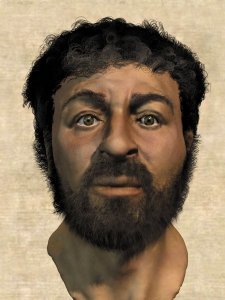QuickSilver
SF VIP
- Location
- Midwest
When you picture Jesus Christ in your head, what do you see? A white man, long blonde hair, and blue eyes? That's the image that has been handed down through popular culture—featured on TV programs like the History Channel series, "The Bible," and seen in portraits of the Son of God that date back to the Renaissance.
But just because everyone seems to insist that Jesus looked like a typical white male, that doesn't make it accurate. In fact, a forensic anthropologist named Richard Neave developed a image of the Christian figure that is pretty far removed from the face we're used to—but one that was informed by historical evidence and computerized tomography.

http://www.attn.com/stories/4692/wh...=bl&utm_medium=fbpost&utm_campaign=influencer

